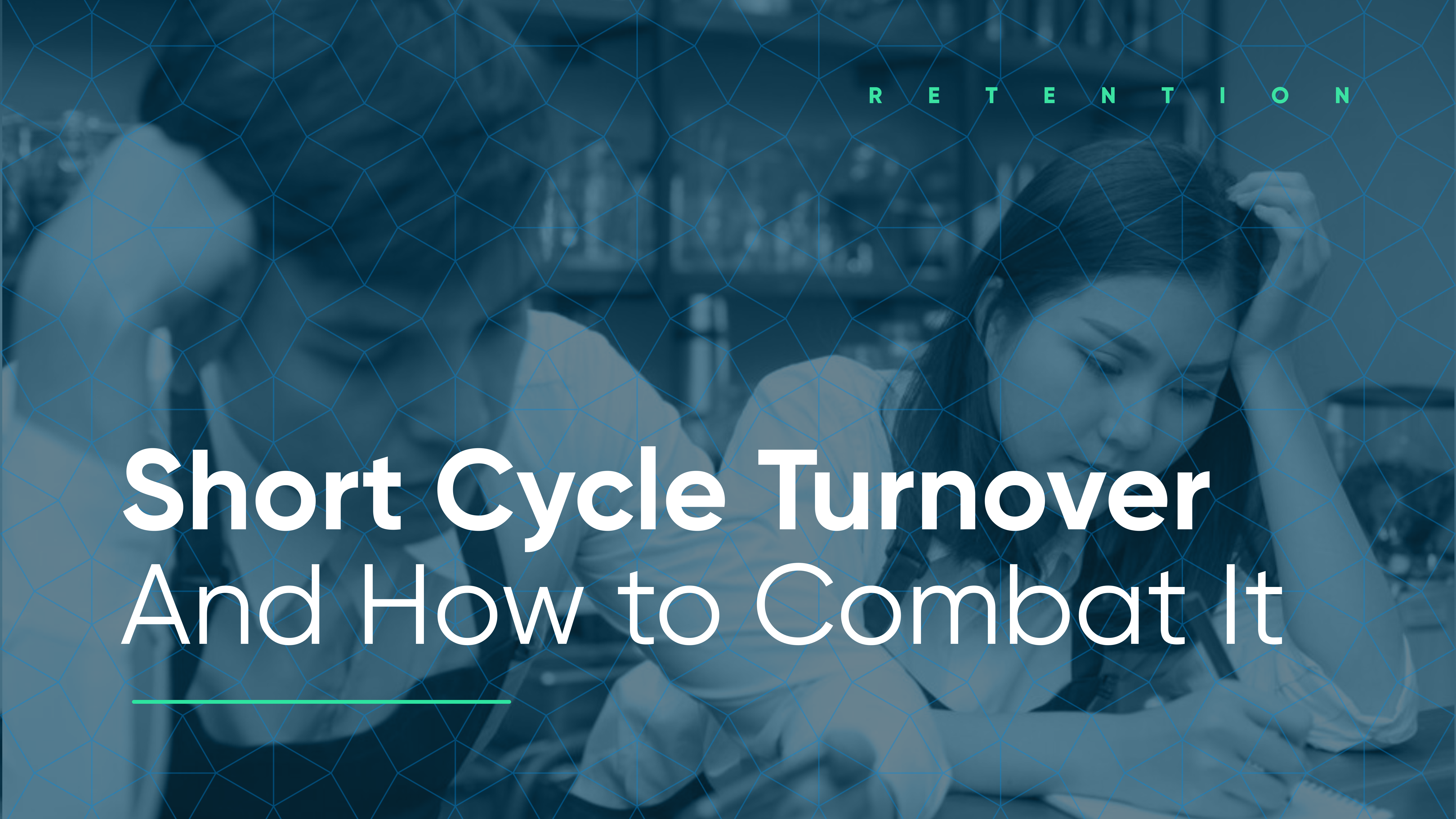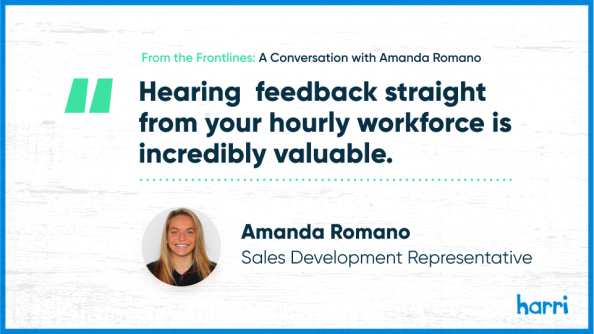Short Cycle Turnover and How to Combat It

- By Harri Insider Team | November 1, 2019
Here today, gone tomorrow. Does that apply to some of your recent hires?
Short Cycle turnover in hospitality seems inevitable for some. Although you may sometimes deliberately hire hospitality talent for a short-term assignment (peak seasons, special events, etc.), investing the time and resources in training a new employee only to have him or her walk out the door within 90 days is painful.
Worse yet, some people don’t even bother to officially resign and simply “ghost” an employer — leaving the business and the rest of the work team confused and overworked at the last minute.
You cannot hold dissatisfied employees hostage, but sadly short cycle turnover has become commonplace, especially when many workers have a wide range of options and hiring in the hospitality and leisure industry appears to be on the upswing.
How Short is a Short Cycle?
The answer all depends on what your expectations are of the people you hire. Many businesses today have adopted an “employment at will” policy. When employees feel that their job can be terminated at any time they often adopt a similar fickleness and lack of loyalty. They have a couple of bad days…another seemingly great job pops up…and they go.
Employee turnover in the hospitality industry is about 74 percent annually, compared to 10-15 percent across all other industries. The cost of replacing an employee can be as much as $13,000 according to a study by TDn2k. Recruiting and onboarding are time-consuming.
A report by Gallup called millennials the “job-hopping generation” because they are three times as likely to change jobs as other age groups.
The fundamental danger of consistent short cycle turnover is that it can easily become the norm for your restaurant or other hospitality business. When employees see their co-workers leaving in a matter of days, weeks, or months, the virus can spread. You need to analyze and curtail it!

Define Short — and Long — for Your Own Business
The first step in combating the “here and gone” syndrome is to look at the data for your own locations. If you don’t already, start capturing detailed information about start and end dates by store (or other location) and aggregate the data by region and manager. The right talent operating system will make tracking this information effortless.
On the other end of the spectrum, pinpoint those employees who have been with your company the longest.
Establish an ideal norm for each position.
Looking at the data is only the first step of the analysis. You want to dig deep into the reasons why people are leaving. Exit interviews are critical. Even if someone does ghost their job, attempt at least one follow-up to understand what prompted him or her to dump and run. But be careful with this because if you are the immediate supervisor and you were the problem, the urge to be defensive may be tough to combat.
The Cycle Starts Before the First Interview
As you fill open positions, look carefully for those people who seem committed to previous employers. You may be eager to fill an open position, but look out for danger signs. Lots of jobs in short timeframes can signal a candidate who is a “hopper.” No matter how plausible their explanations are, check references and ask probing questions.
Make sure you also create and articulate the “typical” employee journey for each new employee. For example, if you manage expectations from the beginning, you’ve set the stage for a long-term relationship. In other words, the first 90 days may be a training period; the next 90 are “trial by fire” and the next 90 are evaluation and review for salary adjustment. By giving employees a sense of the longer-term path and showing examples of long-tenured members of the team, you’ve expressed your commitment to investing in every new employee.
Be sure to manage expectations. If, for example, you know that the job can sometimes be stressful and shifts can change quickly, make that clear upfront. Honesty is important for both the employer and employee. As in any relationship, feeling you were lied to or misled will contribute to dissatisfaction.
Why Else Do People Leave?
Use your own brand’s data first and foremost. Conduct comprehensive and non-judgemental exit interviews. Among the most common reasons for quitting are:
- Relationship with the boss. If you are the boss, listen and learn. The team you save may be your own.
- Boredom. Although it may not be as prevalent in the hospitality industry, understand each employee’s capabilities and create opportunities for them during slow times.
- Co-worker relationships. Team-building and mediation in the case of disputes are essential. Attempt to head this off by conducting team interviews and listening to feedback. Invest time in group training and communication.
- Lack of employee recognition and feedback. Don’t wait until an annual performance review to tell someone how he or she is doing at the job. Feedback should be a 24/7 activity and positive must outweigh the negative even when dealing with average employees. Everyone needs to be motivated on a regular basis.
One might have guessed that “more money” or “better hours” would be high on that list. Although they are certainly factors, people are less likely to leave if they truly enjoy coming to work every day and/or if they believe that their boss genuinely cares about them and values their long-term success.
Hire in Haste and Repent at Leisure is No Longer True
Technology can actually speed-up the hiring process and eliminate candidates who might not be a good long-term fit. Haste does not mean hasty or irresponsible. The right technology can actually result in better applicants, screening, communication, interview scheduling, and onboarding.
Additionally, the right integrated system can help operators manage the entire process more smoothly during those first 90 days. This chart clearly illustrates how an integrated Workforce Operating System (or OS) can help automate and track many of those steps that can make or break employee satisfaction.
Clearly, understanding your own needs and norms, utilizing the right technology, and being honest about the factors that are affecting your turnover (and dealing with them) will pay off in the long run — saving you time, money, and aggravation. When people stay more than 90 days, everyone wins!




















